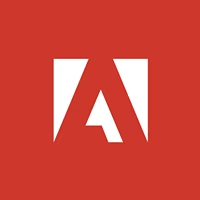Description

Onshape

Solid Edge
Comprehensive Overview: Onshape vs Solid Edge
Onshape and Solid Edge are both prominent computer-aided design (CAD) software tools used by professionals in various industries. Each has its own strengths and target markets, as well as unique features that cater to different user needs. Here’s a comprehensive overview of each:
a) Primary Functions and Target Markets
Onshape:
-
Primary Functions:
- Onshape is a cloud-based CAD platform that allows users to perform parametric modeling, simulate designs, create complex parts and assemblies, and manage product development in real-time. It supports collaborative workflows, enabling multiple users to work on the same project simultaneously from anywhere.
- The platform includes functionality for creating technical drawings, sheet metal design, and importing/exporting a wide range of CAD file types.
-
Target Markets:
- Onshape is often targeted toward startups, small-to-medium enterprises (SMEs), and educational institutions that benefit from its cloud-based infrastructure. It's especially beneficial for teams who need remote access to design tools and value collaboration and easy access to version control.
- Industries include consumer electronics, mechanical engineering, robotics, and education.
Solid Edge:
-
Primary Functions:
- Developed by Siemens, Solid Edge is a CAD software that provides robust capabilities for 3D design, simulation, manufacturing, and data management. It is a part of Siemens' portfolio for product lifecycle management (PLM).
- Solid Edge offers synchronous technology that combines parametric and direct modeling, making it versatile for handling complex designs and modifications.
-
Target Markets:
- Solid Edge targets a wide range of users from small businesses to large enterprises, particularly those in industries such as automotive, aerospace, machinery, and industrial equipment.
- It’s often chosen by companies that need comprehensive tools for both design and manufacturing and benefit from integration with Siemens’ broader software ecosystem.
b) Market Share and User Base
-
Onshape:
- As a relatively newer player with its unique cloud-based model, Onshape has been growing steadily and carving a niche in the CAD market. It's particularly popular among younger companies and educational institutions looking for scalable, collaborative solutions.
- Market share is smaller compared to more established players like Solid Edge, but its user base is rapidly expanding, especially as more organizations embrace cloud technologies.
-
Solid Edge:
- Solid Edge has a significant presence in the mid-range CAD market alongside competitors like SolidWorks and Autodesk Inventor. It has a well-established user base in traditional manufacturing sectors and enjoys a strong reputation for its synchronous technology.
- Its market share is substantial within Siemens' ecosystem but may not rival the highest in the market due to the competitive nature of CAD offerings from other major vendors.
c) Key Differentiating Factors
-
Deployment and Accessibility:
- Onshape: Fully cloud-based, which facilitates easy access, collaboration, and version control without the need for installing software. It can be accessed via web browsers, which enhances its appeal in remote work and educational environments.
- Solid Edge: Typically installed on local machines, with network and cloud-enabled capabilities as part of Siemens’ industrial software offerings. It provides powerful desktop-based performance and flexibility.
-
Feature Set and Integration:
- Onshape: Strong focus on collaboration and data management due to its cloud foundation. Its real-time collaboration tools and versioning are major differentiators, offering seamless project management.
- Solid Edge: Known for its synchronous technology that enables flexibility in design processes. It offers enhanced simulation and manufacturing capabilities and is well-integrated with Siemens PLM solutions for comprehensive lifecycle management.
-
Design Approach:
- Onshape: Offers a modern approach leveraging cloud tech; ideal for dynamic teams that require live collaboration and rapid iteration.
- Solid Edge: Provides a blend of parametric and direct modeling with robust simulation features, catering to industries that require detailed engineering and manufacturing processes.
In summary, Onshape and Solid Edge serve overlapping but slightly different segments of the CAD market, with distinct features that appeal to their respective user bases. Onshape is a leading choice for cloud-first priorities, while Solid Edge excels in environments where deep integration with manufacturing and PLM processes is critical.
Contact Info

Year founded :
Not Available
Not Available
Not Available
India
http://www.linkedin.com/company/rilonshape

Year founded :
Not Available
Not Available
Not Available
Not Available
Not Available
Feature Similarity Breakdown: Onshape, Solid Edge
When comparing Onshape and Solid Edge, both are powerful CAD (Computer-Aided Design) tools with a variety of features for different engineering and design needs. Here’s a breakdown of their core features, user interfaces, and unique aspects:
a) Core Features in Common
Both Onshape and Solid Edge provide a wide array of tools and functionalities for CAD users. Their common core features include:
-
3D Part and Assembly Modeling:
- Both offer robust tools for creating 3D models of parts and assemblies, allowing users to design complex products efficiently.
-
Parametric Design:
- They support parametric modeling, which allows for easy adjustments and modifications by altering dimensional and design constraints.
-
Sheet Metal Design:
- Both platforms offer capabilities for designing sheet metal parts, providing tools specific to bending, cutting, and flattening.
-
Drafting and Drawing:
- They include features to create detailed 2D drawings from 3D models, essential for manufacturing and documentation purposes.
-
Simulation and Analysis:
- Both provide simulation tools to test the mechanical and thermal performance of designs.
-
Collaboration and Data Management:
- Users can share designs and manage project data, though Onshape has a stronger emphasis on cloud collaboration due to its inherent cloud-based nature.
b) User Interfaces Comparison
-
Onshape:
- Onshape is entirely cloud-based, which means it can be accessed through a web browser without needing any substantial installation. This approach offers a consistent UI across different devices.
- Its interface is designed to be intuitive and clean, focusing on ease of use with context-sensitive menus that simplify navigation and operation for users.
- The cloud-based nature also facilitates real-time collaboration, with multiple users able to work on the same document simultaneously.
-
Solid Edge:
- Solid Edge typically requires a local installation and offers a more traditional, rich desktop CAD experience.
- It has a customizable UI with a broad range of toolbars and palettes, which might have a steeper learning curve for new users compared to Onshape.
- Solid Edge provides advanced features like "Synchronous Technology" which integrates direct and parametric modeling. The user interface supports these features for users handling complex tasks.
c) Unique Features
- Onshape:
- Cloud-Based Architecture: As a purely cloud-based software, Onshape requires no local software installation and offers unmatched mobility and ease of access. This is a significant differentiator, especially for teams needing easy collaboration.
- Real-Time Collaboration: Multiple users can work simultaneously on the same model, with edits visible in real-time, facilitating teamwork and reducing the need for version control.
- Solid Edge:
- Synchronous Technology: This unique feature allows users to work with a combination of both direct and parametric modeling and provides flexibility in how models are manipulated and edited.
- Convergent Modeling: Solid Edge offers integrated modeling of mesh, surfaces, and solids, facilitating work with imported polygonal data.
- Generative Design: More advanced capabilities for generative design are available in Solid Edge, which leverages AI to automatically generate optimized design options based on user-specified criteria.
In summary, while Onshape and Solid Edge share foundational CAD features, their approaches and unique features differentiate them significantly. Onshape excels in real-time collaborative design via the cloud, while Solid Edge provides more traditional, feature-rich desktop capabilities with innovative modeling technologies.
Features

Not Available

Not Available
Best Fit Use Cases: Onshape, Solid Edge
When considering Onshape and Solid Edge, it's essential to evaluate the unique strengths and features of each platform to determine the best fit use cases.
Onshape
a) For what types of businesses or projects is Onshape the best choice?
-
Cloud-Based Design Needs: Onshape is a cloud-native CAD platform, which makes it ideal for companies that require access to design tools from anywhere. This is ideal for remote teams or businesses with multiple locations.
-
Collaborative Projects: Its real-time collaboration capabilities allow multiple team members to work on the same design simultaneously, making it a strong choice for projects where collaboration and rapid iteration are critical.
-
SMBs and Startups: Small to medium-sized businesses and startups might find Onshape particularly appealing due to its lower upfront costs compared to traditional CAD systems, along with its scalable subscription model.
-
Education and Training: Onshape offers free versions for educational use, making it popular among educational institutions and for training purposes.
-
Fast-Paced Product Development: Companies that are focused on product development with frequent design changes and quick turnaround times can benefit from the agility and flexibility that Onshape offers.
d) Industry Verticals or Company Sizes
- Industries such as consumer electronics, medical devices, and IoT, which often require tight collaboration across teams, can greatly benefit from Onshape.
- Suitable for companies ranging from small startups to medium enterprises, especially those that value agility and modern IT infrastructure.
Solid Edge
b) In what scenarios would Solid Edge be the preferred option?
-
Complex Mechanical Design: Solid Edge is renowned for its robust mechanical design capabilities, making it well-suited for industries requiring detailed and complex modeling.
-
Existing Siemens Ecosystem: Companies already using Siemens products might prefer Solid Edge due to its seamless integration with other Siemens tools, which can enhance the overall workflow.
-
Engineering-Intensive Projects: Solid Edge's comprehensive set of features, including simulation and advanced manufacturing options, make it suitable for engineering-heavy projects.
-
Manufacturing: Businesses involved in manufacturing, particularly those requiring support for traditional and additive manufacturing processes, can benefit from Solid Edge's capabilities.
-
Enterprise-Level Needs: Large enterprises with extensive product lifecycle management (PLM) requirements may prefer Solid Edge for its scalability and comprehensive toolset.
d) Industry Verticals or Company Sizes
- Industries like automotive, aerospace, machinery, and heavy equipment that demand high precision and engineering rigor tend to favor Solid Edge.
- Best suited for medium to large-sized enterprises that need robust engineering solutions and already have or plan to build upon Siemens’ ecosystem.
Both Onshape and Solid Edge cater to different needs and preferences. Onshape excels in flexibility and collaboration for smaller or more distributed teams, while Solid Edge is a strong contender for larger enterprises with intricate engineering requirements and existing Siemens toolchains.
Pricing

Pricing Not Available

Pricing Not Available
Metrics History
Metrics History
Comparing undefined across companies
Conclusion & Final Verdict: Onshape vs Solid Edge
Conclusion and Final Verdict for Onshape and Solid Edge:
When evaluating CAD software, the decision often boils down to specific needs and preferences regarding functionality, ease of use, collaboration features, and budget considerations. Both Onshape and Solid Edge are prominent players in the CAD space, each offering unique advantages and attracting a diverse user base.
a) Considering all factors, which product offers the best overall value?
Best Overall Value: Onshape
Onshape edges out in terms of offering the best overall value, primarily due to its cloud-based architecture, ease of collaboration, and accessibility. While Solid Edge boasts a powerful suite of tools and high-level functionality, the cloud-based nature of Onshape makes it more adaptable to varied team environments, offering features that benefit especially smaller teams or startups with remote needs.
b) Pros and Cons of Choosing Onshape and Solid Edge
Onshape:
-
Pros:
- Cloud-Based Platform: Access from any device with internet connectivity; no hardware constraints.
- Collaboration: Real-time collaboration features are unmatched, allowing multiple users to work simultaneously.
- Version Control: Automatic versioning without the need for manual saving or local backups.
- Regular Updates: Frequent updates and improvements without the need for reinstallation.
-
Cons:
- Internet Dependence: Requires a stable internet connection for optimal performance.
- Feature Limitations: May not have as robust a feature set as some traditional CAD tools for specific advanced engineering tasks.
- Subscription Cost: Recurring cost model which might not suit all business sizes or preferences.
Solid Edge:
-
Pros:
- Comprehensive Features: Extensive suite of tools for an array of engineering tasks, including advanced simulation.
- Legacy Integration: Strong integration with existing PLM systems and older CAD files.
- Customization and Add-ons: Offers various modules for different industry needs.
- Local Installation: Doesn’t rely on internet access, although it supports cloud capabilities.
-
Cons:
- Hardware Requirements: Requires investment in powerful hardware for optimal use.
- Steeper Learning Curve: More complex interface which might be daunting for new users.
- Collaboration: Collaboration features, while present, are not as seamless as Onshape’s cloud-native capabilities.
c) Specific Recommendations for Users:
-
For Teams Requiring Frequent Collaboration:
- Choose Onshape if your team is distributed globally or works remotely, as its cloud-native platform facilitates real-time collaboration effortlessly.
-
For Users with Advanced Simulation Needs:
- Solid Edge is more suitable if advanced simulations or specific industry-related functionalities are a priority, as it has a more extensive set of tools.
-
For Users Concerned About Hardware Costs:
- Onshape would be a better choice to avoid significant investments in high-end workstations due to its cloud-based access.
-
For Long-Term Legacy System Integration:
- Opt for Solid Edge if integration with longstanding legacy systems and specific enterprise configurations is crucial.
In conclusion, the choice between Onshape and Solid Edge should be guided by the specific functional requirements, budget considerations, and collaboration needs of the user or organization. Onshape appeals more to innovative, lightweight, and collaborative approaches, whereas Solid Edge offers a depth of features beneficial to traditional engineering environments.
Add to compare
Add similar companies




